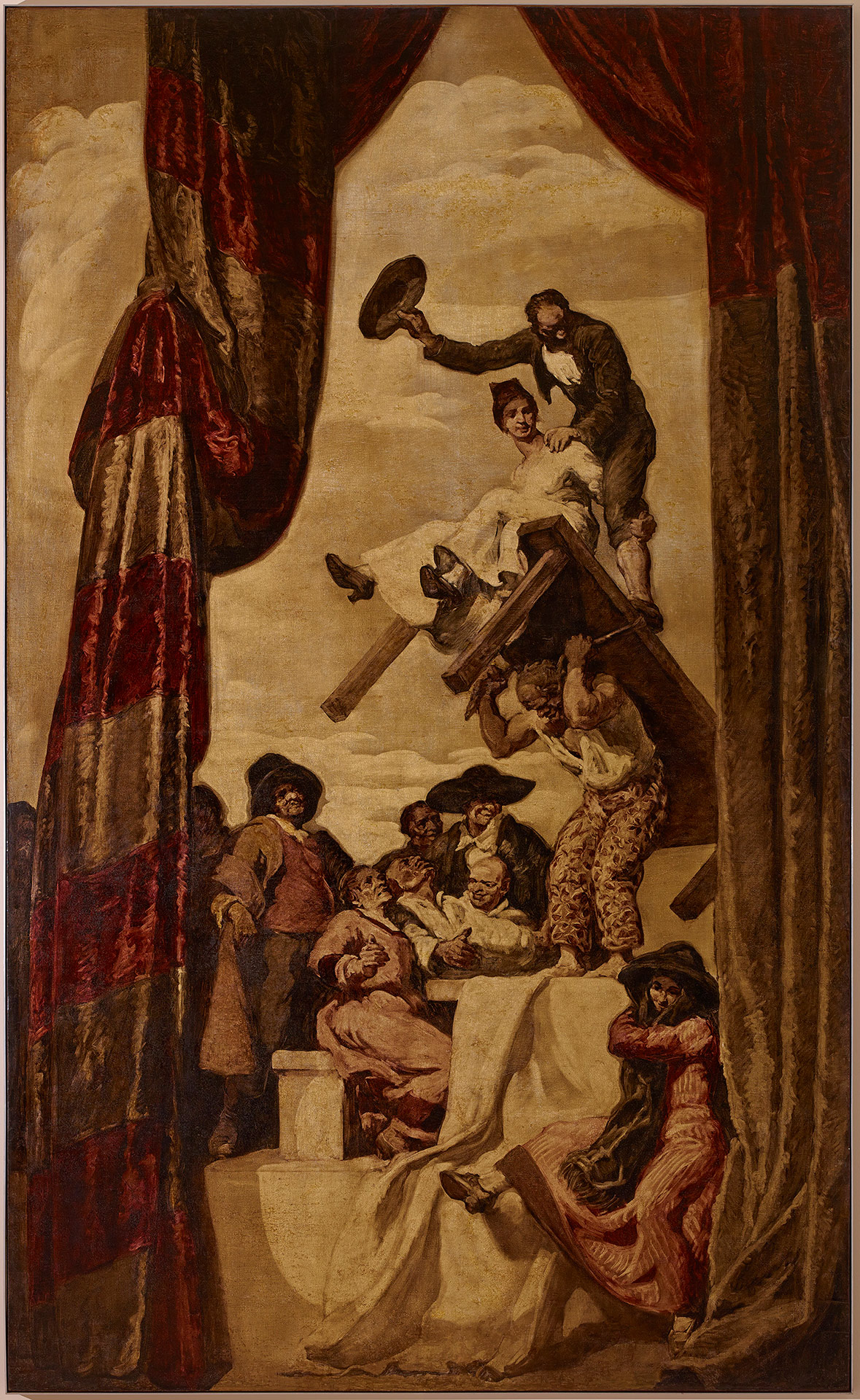
Josep Maria Sert (Barcelona, 1874-1945)
The Strongman
1929-1930
WORK INFORMATION
Black and gold grisaille on canvas, 420 x 253 cm
Josep Maria Sert was undoubtedly one of the most unusual and controversial artists of the 20th century. What made him unusual was his almost exclusive dedication to decorative painting, with minor forays into theatre and illustration, which brought him amazing success and international fame; in fact, many regard him as the greatest pictorial decorator of the interwar years. That same body of work is also a source of controversy, for his grandiose style and stubborn loyalty to certain traditional aspects have led some to claim that his brilliant career was the result of a good head for business rather than artistic skill. In any case, the fact is that no painter met the expectations of the society in which he lived better than Sert, and none could rival his unique ability to reflect its tastes and lifestyle.
A native of Barcelona and heir to a family fortune, at the close of the 19th century he decided to leave for Paris to make a future for himself as an artist. His first commission, the decoration of the Cathedral of Vic, for which he made three designs, was the job that brought him fame and gave him that aura of a direct heir of Michelangelo for which he became world-renowned.
The Banco Santander Collection possesses two of his works. One comprises several fragments of what was undoubtedly—in the absence of his first design for Vic, destroyed by fire—the greatest achievement of his early career: the decorative murals painted in 1913 for the rooms of Kent House, a London property owned by Sir Saxton Noble. The panel entitled The Triumph of Apollo illustrates better than any other the classicist-inspired style that earned Sert his first rave reviews. The Italian influences picked up during his numerous visits to the peninsula and a clear, constant reference to mythology are present and yet wholly personalised in their combination with the exotic and Orientalising elements (elephants, palm trees, etc.) typical of his later work. It is therefore a key piece that synthesises his previous work and heralds the new paths he would pursue in years to come.
After his second decorative programme at the Vic cathedral was unveiled to great acclaim in 1929, Sert's career took off in the United States. Camacho's Wedding, now in the Banco Santander Collection, was the first work he presented to the public in New York and one of his greatest accomplishments. The series consists of fifteen panels designed for the formal dining rooms of the Waldorf Astoria Hotel, a beacon of Art Déco elegance. Turning to Don Quixote for inspiration, Sert devised a work with popular folk undertones, in line with the "quintessential Spanish" aesthetic in vogue at the time, and obvious allusions to Goya. We can identify the decorative motifs typical of Sert at his finest: human towers, acrobatics, musical instruments and animals in an atmosphere of festive jollity.
The painter died in 1945, a few days after installing the final canvases of his third design for the Cathedral of Vic. That work remained unfinished, and yet it faithfully conveys the pomp and splendour of Sert's art. [Pilar Sáez Lacave]

